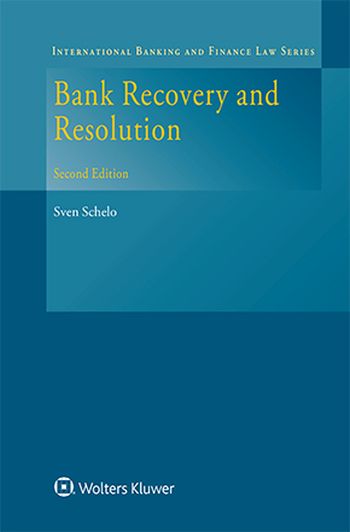
The device(s) you use to access the eBook content must be authorized with an Adobe ID before you download the product otherwise it will fail to register correctly.
For further information see https://www.wildy.com/ebook-formats
Once the order is confirmed an automated e-mail will be sent to you to allow you to download the eBook.
All eBooks are supplied firm sale and cannot be returned. If you believe there is a fault with your eBook then contact us on ebooks@wildy.com and we will help in resolving the issue. This does not affect your statutory rights.
Bank Recovery and Resolution is a book that organises a highly complex legal system into patterns and action plans that can be applied in virtually any eventuality likely to arise in cases where bank business is of central significance. In light of the colossal efforts that have been made worldwide since 2008 to draft rules to prevent a reoccurrence of the disastrous financial events of that year, the bank business has been laid open to the intense public and government scrutiny, and regulation of banking has grown to astounding proportions. Surpassing the other measures taken, the EU Bank Recovery and Resolution Directive (BRRD) along with the Single Resolution Mechanism (SRM) and the Single Resolution Fund model a pivotal new pillar in the European Banking Union.
What’s in this book:
This significant and well-researched book sets the new rules under BRRD into their full context as cross-border phenomena. With its lucid explanation of fundamental provisions, procedures, and ‘triggers’, it highlights the following topics:
This compendium is augmented by a comparative dimension, which includes a reference to the United States and other national developments and an exhaustive analysis of Switzerland’s regulatory response to the crisis. For the second edition, the recent substantial changes to BRRD and SRM, as well as practical restructuring and resolution cases, have been reflected. A particular focus has been placed on resolution planning and the revised requirements for MREL (Minimum Requirements for Own Funds and Eligible Liabilities) and possible strategies.
How this will help you:
Considering that a coherent and flawless global system of bank recovery and resolution has not yet been established and that major banks are global players headquartered in different jurisdictions and even different continents, this book will immensely facilitate the work of practitioners who must deal with cases involving international banking under the prevailing status quo. Its practicality to officials and academics in international banking and finance law and policy, who are working towards a global solution, is of incomputable value.